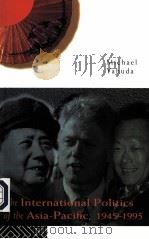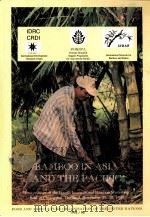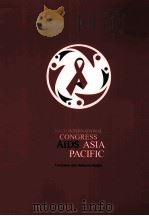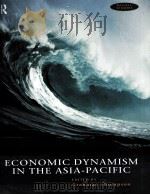《INTERNATIONAL ENVIRONMENTAL LAW IN THE ASIA PACIFIC》
| 作者 | 编者 |
|---|---|
| 出版 | BEN BOER AND ROSS RAMSAY |
| 参考页数 | 368 |
| 出版时间 | 1998(求助前请核对) 目录预览 |
| ISBN号 | 9041107061 — 求助条款 |
| PDF编号 | 812869698(仅供预览,未存储实际文件) |
| 求助格式 | 扫描PDF(若分多册发行,每次仅能受理1册) |
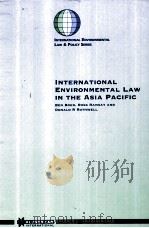
Chapter 1: The Nature of International Environmental Law1
1.Introduction1
2.The Development of International Environmental Law3
2.1. Decisions of Courts and Tribunals4
2.2. Early Conventions5
2.3. Stockholm Conference5
2.4. Post-Stockholm Developments7
2.5. Rio Conference8
3.Principles of International Environmental Law9
3.1. Obligation to Conserve the Environment and Natural Resources10
3.2. Assessment and Monitoring of Environmental Impact11
3.3. International Co-operation12
4.Sustainable Development13
5.International Covenant on Environment and Development15
6.Enforcement and Implementation of International Environmental Law17
7.Relationship between Global and Regional Instruments18
8.The Changing Nature of International Environmental Law20
9.Conclusion21
Chapter 2:International Organizations and International Environmental Law23
1. Introduction23
2. Global and Regional Organizations25
3. Global Organizations Within the United Nations System26
3.1. United Nations26
3.2.United Nations Environment Programme27
3.3. United Nations Development Programme29
3.4. United Nations Educational, Scientific and Cultural Organization30
3.5. World Bank30
3.6. Global Environment Facility31
3.7. The Commission on Sustainable Development33
4. Intergovernmental Organizations Outside the United Nations System35
4.1.Organization for Economic Co-operation and Development35
4.2. World Trade Organization36
4.3. The Asia Pacific Economic Cooperation Forum36
5. Non-Governmental Organizations37
5.1.IUCN—The World Conservation Union37
5.2. Greenpeace38
5.3. Worldwide Fund for Nature39
5.4. The Nature Conservancy39
6. Regional Organizations in the Pacific Region39
6.1.South Pacific Commission40
6.2. South Pacific Forum40
6.3. South Pacific Forum Fisheries Agency40
6.4. South Pacific Regional Environment Programme41
7.Regional Organizations in Asia43
7.1. Association of South East Asian Nations (ASEAN)43
7.2. Economic and Social Commission for Asia and the Pacific43
7.3. South Asia Co-operative Environmental Programme44
7.4. Asian Development Bank44
8. UNEP Regional Seas Programme46
9. Conclusion46
Chapter 3:Regional Environmental Issues and Responses47
1. Review of Regional Environmental Issues47
1.1. Biodiversity48
1.2.Climate Change49
1.3. Population Growth50
1.4. Marine Environment50
1.5. National and Transboundary Pollution52
1.6. Sustainable Development52
2.Regional Frameworks53
2.1. Impact of Decolonisation and Independence54
2.2. Impact of Colonial Powers54
2.3. North/South Interaction55
2.4. Parameters of Regulation56
3. Overview of Legal Responses58
4.Responses to Transboundary Issues61
4.1. Hazardous Wastes and Shipments61
4.2. Nuclear Weapons and Testing64
5. Conclusion68
Chapter 4:Conservation of Natural and Cultural Heritage71
1. 1954 Convention and Protocol for the Protection of CulturalProperty in the Event of Armed Conflict (Hague Convention)72
2.UNESCO Convention75
2.1. Basic Obligations75
2.2. Services for the Protection of Cultural Heritage75
2.3. Export and Import Procedures76
2.4. International Assistance76
2.5. Implementation of the UNESCO Convention in theAsia Pacific76
2.6. Link between the UNESCO Convention and the UNIDROIT Convention78
3.World Heritage Convention78
3.1. Definition of “Cultural Heritage”79
3.2. Outstanding Universal Value Criteria of Cultural Properties79
3.3. Definition of “Natural Heritage”80
3.4. Outstanding Universal Value Criteria of Natural Properties80
3.5. Duties under the Convention81
3.6. World Heritage in Danger List81
3.7. Cultural Landscapes82
3.8. Specialist Advice82
3.9. World Heritage Fund83
4. Implementation of the World Heritage Convention in the Asia Pacific Region83
5.UNIDROIT Convention85
5.1. Scope of the Convention85
5.2. Obligations86
5.3. Entry Into Force86
6. ASEAN Agreement on the Environment: Protection of Cultural and Natural Heritage86
7.Indigenous Cultural Heritage87
7.1. Indigenous Cultural Heritage in General87
7.2. Indigenous Cultural Heritage in the Asia Pacific Region89
8. Intangible Heritage90
9. Draft Convention on the Underwater Cultural Heritage91
10. Conclusion93
Chapter 5:Protection of Biological Diversity95
1.Biodiversity: Value, Status and Threatening Processes95
1.1. Value of Biodiversity95
1.2. Status of Biodiversity96
1.3. Threatening Processes98
2. Approaches to the Protection of Biodiversity100
3.Global and Regional Responses102
3.1. Convention on International Trade in Endangered Species of Wild Fauna and Flora105
3.2. Convention on Biological Diversity108
3.3. ASEAN Agreement on the Conservation of Nature andNatural Resources112
3.4. Convention on Conservation of Nature in the South Pacific115
3.5. Environment Action Plan for the South Pacific Region115
3.6. Migratotry Birds Agreements117
3.7. Global Environment Facility Projects117
4. Conclusion119
Chapter 6:Protection of the Marine Environment121
1. Threats to the Marine Environment123
2.Global Conventions for the Protection of the Marine Environment124
2.1. United Nations Convention on the Law of the Sea(UNCLOS)125
2.1.1. Specific Pollution Provisions of UNCLOS126
2.1.2. Additional Marine Environmental Protection Provisions126
2.2.International Convention for the Prevention of Pollution from Ships127
2.3. Intervention Convention129
2.4. Civil Liability Convention130
2.5. Fund Convention131
2.6. London Convention131
2.7. Oil Pollution Preparedness Convention132
3.Regional Issues and Responses133
3.1. SPREP Convention134
3.2. Ship-based Marine Pollution137
3.3. Land-based Marine Pollution138
3.4. Marine Living Resource Management140
3.5. Protection of Special Marine Areas141
4. Future Directions143
Chapter 7: Climate Change145
1. Process and Impacts of Climate Change145
1.1.Process of Climate Change145
1.2. Impacts of Climate Change148
2. Framework Convention on Climate Change152
2.1.Commitments under the FCCC154
2.2. Financial Assistance under the FCCC158
2.3. Other Issues under the FCCC161
3. Regional Responses to Climate Change162
3.1. Alliance of Small Island States (AOSIS)163
3.2.Asia Pacific Leaders’ Conference on Climate Change and the Manila Declaration164
3.3. Regional Action Plan for Climate Change in Asia Pacific165
3.4. South Pacific Regional Environmental Programme, Climate Change Action Plan and Work Programme166
3.5. Regional Activities of the Global Environmental Facility andAsian Development Bank167
4. Conclusion170
Chapter 8:Trade-Related Environment Issues171
1.Trade and Environment Linkages172
1.1. Free Trade and Economic Growth172
1.2. Free Trade and Environmental Standards174
1.3. Free Trade and Multilateral Environmental Agreements177
2.Global Developments178
2.1. GATT/WTO Trading System179
2.2. Environmental Issues under the GATT/WTO Trading System180
2.3. Environmental Issues After the Uruguay Round of Trade Negotiations183
3.Regional Developments186
3.1. ASEAN Free Trade Area (AFTA)188
3.2. Asia Pacific Economic Cooperation Forum (APEC)189
4. Conclusion192
Chapter 9:Subregional and State Responses193
1. Subregional Responses195
Chapter 10: Mekong Region199
1.Environmental Challenges in the Mekong Region200
2. Regional Responses to Environmental Problems201
3. The Mekong River Agreement201
4. National Implementation of Global and Regional Conventions in Cambodia, Vietnam and Laos203
5.Cambodia203
5.1. International Conventions204
5.2. National Laws204
6.Vietnam205
6.1. Environmental Conventions and Agreements to which Vietnamis a Party206
6.2. Compliance with International Obligations206
6.3. Development of Vietnam’s Environmental Legislation and Administration208
6.4. Administrative Structures Relating to the Environment209
6.5. Reforms209
7. Laos209
7.1. International Environmental Conventions210
7.2. Domestic Implementation of Environmental Conventions211
8. Conclusion213
Chapter 11:China215
1. Environmental Challenges in China215
2. China’s Agenda 21217
3.Implementing Institutions217
3.1. The Environmental Protection Commission and the National Environmental Protection Agency217
4. National Environmental Laws219
5. National Implementation of Global and Regional Conventions220
6. Reforms222
Chapter 12:The ASEAN Region225
1. The ASEAN Region and its Environmental Issues225
2.Responses by ASEAN to Environmental Concerns226
2.1. Declarations and Institutional Features226
2.2. ASEAN Agreement on the Conservation of Nature and Natural Resources227
2.3. ASEAN Strategic Plan of Action on the Environment 1994-1998229
2.3.1. Objectives230
2.3.2. Strategies230
2.4. ASEAN Responses to Particular Environmental Issues232
2.4.1. Tropical Timber232
2.4.2. Harmonization of Environmental Standards233
2.4.3. ASEAN Co-operation Plan on Transboundary Pollution 1995233
2.4.4. Financial Resources234
3. Adoption of International and Regional Environmental Agreements by ASEAN Member Countries235
3.1.Indonesia235
3.1.1. International Conventions235
3.2. Malaysia236
3.2.1International Conventions237
3.3.The Philippines237
3.3.1 International Conventions238
3.4.Singapore238
3.4.1. International Conventions239
3.5. Thailand239
3.5.1. International Conventions239
3.6. Brunei240
3.6.1. International Conventions240
4.Conclusion241
Chapter 13:Southwest Pacific243
1. South Pacific Regional Environment Programme (SPREP)247
2.International Legal Framework249
2.1. United Nations Convention on the Law of the Sea251
2.2. South Pacific Forum Fisheries Convention and related Instruments252
2.3. South Pacific Nuclear Free Zone Treaty255
2.4. Convention on the Conservation of Nature in the South Pacific (Apia Convention)255
2.5. 1986 Convention for the Protection of the Natural Resources and Environment of the South Pacific (SPREP Convention)256
2.6. 1989 Convention for the Prohibition of Fishing with Long Drift-nets in the South Pacific259
2.7. 1992 United Nations Framework Convention on Climate Change259
2.8. Convention on Biological Diversity261
2.9. Waigani Convention261
2.10. Barbados Declaration263
3. Implementing International Environmental Conventions in the South Pacific263
4. Future of Environmental Law in the Pacific264
Chapter 14:Australia and New Zealand265
1. Regional Environmental Issues267
2. International Instruments of Significance in the Region268
3. Regional Environmental Agreements269
4.National Implementation of Global and Regional Conventions271
4.1. Australian Responses271
4.1.1. Marine Environment273
4.1.2. World Heritage274
4.1.3. UNCED Responses275
4.1.4. Australian Courts276
4.2. New Zealand Responses279
4.2.1. Legislative Responses279
4.2.2. Administrative Responses to International Environmental Law281
5.Conclusion282
Chapter 15:Interaction between Global and Regional International Environmental Law285
1. The Legal Rules286
1.1. Vienna Convention on the Law of Treaties287
1.1.1. Conflicting Treaties288
1.1.2. Succeeding treaties289
1.2. Treaty practice289
2. Treaty Interaction290
2.1. Marine Environmental Protection291
2.1.1. Sustainable Fishing292
2.1.2. Drift-net Fishing292
2.1.3. Regional Seas Regimes293
2.2. Hazardous Wastes and Materials295
2.2.1. Waigani Regional Convention on Hazardous Wastes295
2.3. Nuclear Free Zones296
2.3.1. South Pacific Nuclear Free Zone296
2.3.2. Southeast Asia Nuclear Weapon-Free Zone298
2.4. Biodiversity Conservation298
3.Resolution of Overlap and Conflict300
3.1. An International Law Approach300
3.2. A State Practice Approach301
4. Conclusion302
Chapter 16:Future of International and Regional Environmental Law in the Asia Pacific305
1.International Environmental Law in the Asia Pacific305
1.1. A Legal Framework305
1.2. Implementation307
1.3. Compliance308
1.4. Sustainable Development309
1.5. Is the Law Complete?310
2.Regional Environmental Law in the Asia Pacific311
2.1. Regional Environmental Co-operation311
2.2. Increasing Regional Interaction312
2.3. Regional Sustainable Development313
2.4. Potential for Asia Pacific Environmental Co-operation314
3.Challenges for International Environmental Law: The Global Dimension315
3.1. Stronger Legal Framework315
3.2. New Compliance Mechanisms316
3.3. Global and Regional Interaction317
3.4. New Legal Regimes and Institutions318
4.Asia Pacific Environmental Law Challenges319
4.1. Economic Development319
4.2. Transboundary Pollution320
4.3. Environmental Security320
4.4. Environmental Compliance321
4.5. Institutional Development321
5. Conclusion322
Bibliography325
1998《INTERNATIONAL ENVIRONMENTAL LAW IN THE ASIA PACIFIC》由于是年代较久的资料都绝版了,几乎不可能购买到实物。如果大家为了学习确实需要,可向博主求助其电子版PDF文件(由 1998 BEN BOER AND ROSS RAMSAY 出版的版本) 。对合法合规的求助,我会当即受理并将下载地址发送给你。
高度相关资料
-
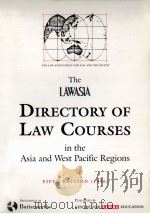
- The lawasia directory of law courses : In the asia and west pacific regions
- 1996 Centre for legal education
-
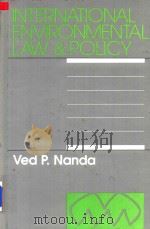
- International Environmental Law & Policy
- 1995 Transnational Publishers
-

- International environmental law
- 1991 Transnational Publishers
-
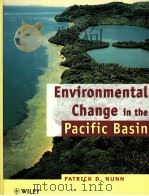
- ENVIRONMENTAL CHANGE IN THE PACIFIC BASIN
- 1999 JOHN WILEY & SONS
-
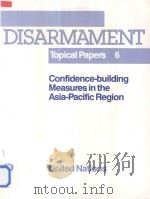
- Confidence-building Measures in the Asia-Pacific Region
- 1991 United Nations
-
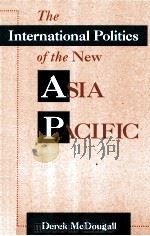
- THE INTERNATIONAL POLITICS OF THE NEW ASIA PACIFIC
- 1997 LYNNE RIENNER PUBLISHERS
-

- ECONOMIC COOPERATION IN THE ASIA-PACIFIC REGION
- 1990 WESTVIEW PRESS
提示:百度云已更名为百度网盘(百度盘),天翼云盘、微盘下载地址……暂未提供。➥ PDF文字可复制化或转WORD

